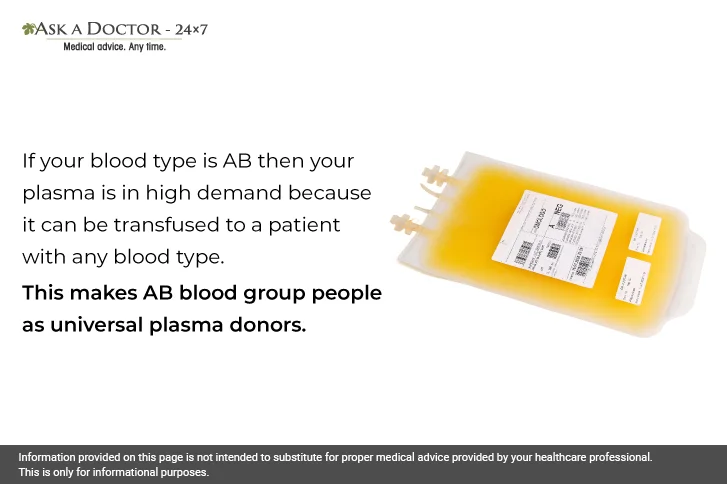Decoding The Difference Between Plasma, Platelet, & Blood Donation
Every year, millions of individuals require blood transfusions. A blood transfusion may be required during surgery, following an injury, in severely anemic individuals or who have dangerously low platelet counts because of certain medical conditions (bleeding disorders) and/or treatments, such as chemotherapy to treat cancer.
Human blood cannot be substituted; donor blood is required for all transfusions. Blood is made up of various components, such as:
- Red blood cells help transport oxygen and nutrients throughout the body.
- White blood cells help combat illnesses.
- Plasma is the liquid component of blood.
- Platelets aid in the formation of a healthy blood clot.
In this blog post, we will discuss the differences and similarities between plasma, platelets, and blood donation in detail.
Understanding Blood, Platelets, and Plasma Donation
Blood transfusion is a lifesaving medical procedure and is the single most common medical procedure carried out in hospitals. While giving a patient a unit of blood, three components can be extracted from one unit of blood that include red blood cells, platelets, and plasma.
Let’s understand blood donation in detail:
1. Blood donation
It is the most common type of donation. The process of donating blood involves giving blood, which is made up of red blood cells, white blood cells, platelets, and plasma.
When you give blood, a sterile needle is used to take typically about a pint (about a half liter) from your arm. Every few months, blood donations are safe because the body replenishes the lost blood within a few weeks. Donating blood is essential for saving lives since the components of donated blood can be isolated and utilized to treat a variety of illnesses.
2. Platelet donation
Platelets or thrombocytes are tiny blood cell fragments that aid in blood clotting. When you are hurt, they are essential in halting the bleeding. A normal platelet count is about 150,000 to 400,000 platelets per microliter (mcL) of blood. Certain medical disorders like leukemia or adverse effects from chemotherapy might cause low platelets in certain people. When the platelet count is below the threshold (often 20,000/mcL), doctors may recommend a platelet transfusion.
The procedure known as apheresis is used to separate platelets from whole blood to donate platelets. Blood is extracted from one arm, processed by a machine to separate the platelets, and then the donor's arm is used to receive the returned blood. Donating platelets requires more time than normal blood donation, but it's just as vital for people receiving specific medical treatments or those with clotting disorders.
3. Plasma donation
In plasma donation, only the liquid part of your blood is collected. Red blood cells and platelets are separated and returned to you. Plasma can be frozen for up to a year. This liquid portion of your blood is responsible for transporting different chemicals like proteins, electrolytes, and hormones throughout the body.
The proteins present in plasma help control bleeding. Hence, it's used to treat various types of bleeding disorders with clotting issues. It's also given to patients who have suffered major traumatic injuries like burns, liver, and bone marrow transplants, or immune deficiencies.
What are the Similarities Between Blood, Platelets, and Plasma Donation?
Donations of blood, plasma, and platelets have several essential characteristics in common including:
The three types of donations constitute the voluntary act of donating a portion of your blood to help those in need.
- All three types of donations are approved by the Food and Drug Administration (FDA) which oversees the process, which is safe and secures the health of both donors and receivers.
- Additionally, every contribution has the power to save lives and enhance the health of people who depend on blood products or transfusions.
- Your donation, whether it be whole blood, platelets, or plasma is essential to helping patients who are having surgery, recovering from illnesses, or dealing with life-threatening situations.
By deciding to donate, you join a group that works to improve the health and well-being of the community.
What is the Difference Between Plasma, Platelet, and Blood Donation?

While giving blood, platelets, and plasma are all vital ways to support others, there are some significant distinctions between the three. Selecting the appropriate kind of donation for you can be made easier by being aware of these distinctions. Let’s understand the differences between them:
In plasma donation, only the liquid portion of your blood is taken. Platelets and red blood cells are extracted and given back to you. Donating plasma is faster than donating blood; it takes roughly 1.5 hours.
Similar to plasma donation, platelet donation involves the removal of platelets rather than the collection of the liquid portion of your blood. Little cells called platelets aid in halting bleeding. Every two weeks, platelet donation can be completed in around two hours.
The most popular kind of donation is blood. Red blood cells, plasma, and platelets are all collected when you donate blood; the entire bag is used. You can donate blood in a gap of every 56 days, which takes about 8 minutes.
The best kind of donation for you will depend on your situation. See if you are eligible to donate blood, platelets, or plasma by speaking with your doctor. You can also Ask an Internal Medicine Specialist online and get answers to all your queries related to blood transfusion.
Conclusion
Thus, plasma, platelet, and blood donations all entail giving a portion of oneself to benefit others, but their functions in medical care are distinct. Whole blood is made available through blood donation to treat a variety of illnesses that need blood transfusions. While plasma donation provides plasma from the manufacturing of life-saving medications, platelet donation concentrates on giving platelets to patients with clotting issues. Every sort of play is vital to preserving lives and enhancing the well-being of less fortunate people. You should be aware that your donations, whether they be in the form of plasma, platelets, or blood, can have a profound impact on someone's life, so talk to your doctor to see if you are eligible.
Ask a Doctor facilitates online consultation 24x7, you can ask your questions to a doctor, and they will reply within minutes. You can also send in your questions to Ask a Specialist of your choice on any health-related matters. Ask now!
Recently Answered Questions Related to Blood Donation
- What Causes Low WBC And Blood Platelets With Hematuria?
- How Can Thick Blood Be Treated?
- Is Blood Donation Advisable With Hypertension?
- Alcohol After Blood Donation. Developed A Lump At The Spot. What Is It?
- What Causes Low WBC And Blood Platelets With Hematuria?
- What Causes Needle-Like Sensation In Upper Left Thigh?
- What Causes Sudden Dizziness And Excessive Sweating After Donating Blood?
- Suggest Treatment For Dizziness After Blood Donation
Disclaimer: Information provided on this page is not intended to substitute for proper medical advice provided by your healthcare professional. This is only for informational purposes.
Ask a Specialist
Recent Questions


